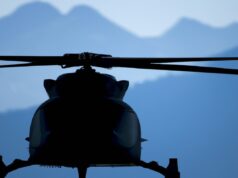Drone Assist, one of the UK’s most trusted apps for drone operators, recently faced significant user backlash after an unexpected update suggested that sites managed by Historic Environment Scotland were designated as ‘No Drone Zones.’
This development sparked concern among users relying on the app for its straightforward representation of where they can and cannot fly their drones.
The confusion arose when several Historic Environment Scotland locations were marked as areas where drones could not legally fly. This designation implied a level of restriction that, according to UK law, does not exist.
Many drone operators, who have long praised Drone Assist for its clear, black-and-white approach to airspace regulations, began to worry that the app was shifting away from its core purpose. The concern was that Drone Assist might have started accommodating landowner requests to mark their property as off-limits to drones, even though such restrictions hold no legal standing under UK law.
Adding to the concern was the fact that these ‘No Drone Zones’ were highlighted in red on the app—a colour typically reserved for indicating legally enforceable restrictions. This visual choice led many to believe that these zones were legally binding, further muddying the waters and creating confusion about where drones could be flown.
In response to these concerns, Team Altitude Angel, the developers behind Drone Assist, issued a statement acknowledging the error and apologising for the confusion.
“We apologise that a recent update has displayed Historic Scotland sites as a no-drone zone. This was not an intended publication and has been removed from our data pending an investigation,†they stated. The team quickly removed the erroneous data and initiated an internal review to ensure that such mistakes do not happen in the future.
Further clarification from Altitude Angel revealed that the ‘No Drone Zone’ classification was applied in error due to a technical issue. Specifically, the data was released earlier than planned and without the proper context.
“The ‘No Drone Zone’ classification was applied in error due to a lack of an assigned landowner profile for this data layer, as it was released earlier than planned in our system,†they explained.
“We want to emphasise that this was an unintended setting and does not accurately reflect the intended use of this data.â€
Altitude Angel also provided insight into the future intentions behind the data layer, which is part of a new product they are implementing.
This product is designed to allow users to request and potentially pay for permission to take off or land (TOAL) from certain properties. While this feature is intended to facilitate better coordination between drone operators and landowners, it inadvertently raised concerns about whether the app was transitioning from a neutral, regulatory tool to a platform that could potentially cater to landowner interests at the expense of drone operators.
“Our goal at Altitude Angel will always be to enable drone operations and to provide accurate and up-to-date information for lower airspace operations. It is not our ambition today or in the future to allow any landowner to implement a No Drone Zone,†the team reassured users.
They stressed that the intended future use of this data is to enable a “greatly improved solution to professionally facilitate TOAL requests to landowner sites,†not to impose unwarranted restrictions on drone operators.
The erroneous data has since been removed from the app, and Altitude Angel has pledged to prevent similar issues from occurring in the future. They have reiterated their commitment to providing accurate, unbiased information to support safe and legal drone operations.
Can I fly a drone over Historic Scotland sites?
Historic Environment Scotland (HES) has recently been scrutinised for claims made on its social media accounts, suggesting it has the authority to restrict drone flights under Section 19 of the Ancient Monuments and Archaeological Areas Act of 1979. However, Freedom of Information (FOI) responses have revealed that no restrictions are in place and that their policy is primarily related to health and safety. They could not cite any legal guidance supporting their claims.
Of course, they can restrict drone pilots from flying from their land, but can they limit drone operators from flying over their land?
HES is a public body responsible for protecting, preserving, and promoting Scotland’s historic environment. Section 19 of the Act outlines their powers and duties concerning the management, preservation, and conservation of ancient monuments and archaeological sites on land.
These powers include restricting access to monuments, regulating activities on or around them, and undertaking preservation and maintenance. However, the Act does not extend to the airspace above these sites, meaning HES has no specific legal authority to regulate or restrict drone usage within that airspace.
Airspace over their site isn’t their property
More specifically, Section 19 of the Ancient Monuments and Archaeological Areas Act 1979 focuses on the “access to any monument under the ownership or guardianship of the Secretary of State or the Commission or any local authority by virtue of this Act.” The term “access” is traditionally held to mean access by physical access by individuals or groups, not the usage of unmanned aircraft systems or drones.
Section 19 allows for the control of access times and the ability to exclude the public for reasons of safety or preservation, but these provisions are typically interpreted in the context of physical presence or activities, not airborne activities such as drone flights.
Furthermore, while Section 19 allows organisations like Historic Environment Scotland to control access to the property under their guardianship, it is important to note that the airspace above their land is not considered part of their property. The Act does not extend its regulation to the airspace above these sites. Control and regulation of airspace is a separate issue governed by different laws. In the UK, drone operations and regulation of the airspace are primarily under the remit of the Civil Aviation Authority (CAA) and are subject to laws such as the Air Navigation Order.
Therefore, based on the wording of Section 19, it very clearly does not provide restrictions or a framework for restrictions on drone use or overflights. The control of the airspace over these monuments and properties, including drone operations, typically falls under the jurisdiction of aviation authorities, not the owners or managers of the land property.
This means that while organisations like Historic Environment Scotland have the power to control access to the property, they do not have the authority to restrict drone access to the airspace above their land, as that is governed separately by aviation laws and authorities.
Airspace regulation and the UK Civil Aviation Authority
The UK Civil Aviation Authority (CAA) is the regulatory body responsible for overseeing and managing the United Kingdom’s airspace, which includes England, Wales, Scotland, and Northern Ireland.
Although Scotland has its own devolved government, the power to regulate airspace remains a reserved matter under the jurisdiction of the UK CAA. This means that the Scottish Government and any Scottish government agency do not have the authority to manage or implement regulations regarding airspace independently.
The Freedom of Information Requests
On to the first of the aforementioned Freedom of Information Requests. The initial request sought clarification on Historic Environment Scotland’s (HES) claims regarding their power to restrict airspace under the Ancient Monuments and Archaeological Areas Act 1979, specifically in relation to drone flights over properties they care for.
The requester (me) asked for the following:
- Information on any legal advice obtained by HES on their ability to create airspace restrictions or place controls on flights over their properties, and the content of that advice.
- The specific subsection of Section 19 of the 1979 Act that HES uses to place controls on drone flights over their properties.
- The maximum altitude of the general prohibition on drones over HES properties.
- The section and subsection of the Ancient Monuments and Archaeological Areas Act 1979 that enables HES’s policy of prohibiting drone flights over their properties without permission.
However, in their response which you can read here, HES did not provide specific legal backing from Section 19 for their drone policy, indicating that this section does not grant them the power to restrict airspace.
Instead, HES suggested that their policy is designed to help them meet their legal obligations under health and safety legislation to ensure visitor safety and protect historic sites. It is important to note that health and safety legislation itself does not directly grant HES the power to restrict airspace either.
On their Facebook page, it appears, HES seem to accept that they do not have legal powers to prohibit flying and instead, their policy is designed to help comply with Health and Safety legislation, stating:
“We are looking into this at the moment. Our drone policy is designed to assist HES in meeting its legal obligations. Drones launched or overflying our sites pose safety risks. Malfunctioning drones could cause injury to visitors or staff or damage the historic properties which is why we ask drone pilots to be considerate when flying drones.”
Registered drone pilots are already required to follow health and safety legislation independently of HES’s policy.
Of note is another FOI request and the response from the CAA to the question:
“I am looking for information regarding airspace restrictions created under section 19 of the ‘Ancient Monuments and Archaeological Areas Act 1979’, specifically;
a) The number of any airspace restrictions created under this section
b) The location of any airspace restrictions created under this section
c) The maximum altitude of those airspace restrictions”
The response was quite simple, merely stating:
“There have been zero airspace restrictions created under Section 19 of the Ancient Monuments and Archaeological Areas Act 1979.”
The CAA’s response confirmed that there had been no airspace restrictions created under Section 19 of the Act.
A quick legal opinion
I contacted someone I know, a Scottish solicitor that will remain unnamed for obvious reasons, she told me:
“In my opinion, Historic Environment Scotland does not possess the legal authority to regulate drone flights in the airspace above their properties, as Section 19 of the Ancient Monuments and Archaeological Areas Act of 1979 does not extend to this aspect. However, it’s important to emphasise that this is merely my interpretation of the law, and drone operators should always act responsibly and adhere to the UK Civil Aviation Authority’s regulations and guidelines when flying around historic sites.”
Just because you can, doesn’t mean you always should
Despite Historic Environment Scotland’s limited legal authority to regulate drone flights above their properties, it remains crucial for drone operators to take care and fly responsibly around historic sites.
These sites are not only culturally and historically significant, but they also often represent delicate and irreplaceable structures that can be easily damaged by accidents or negligence.
Responsible drone flying around historic sites helps to:
- Preserve the integrity of the sites: By flying with caution, drone operators can minimise the risk of accidentally causing damage to the monuments or structures. Even minor damage can have long-lasting consequences for these sites, potentially undermining their stability or historical value.
- Ensure visitor safety: Many historic sites are popular tourist attractions, and careless drone flying could pose a risk to the safety of visitors. By adhering to the CAA’s regulations and guidelines, drone operators can help ensure a safe experience for all visitors to these locations.
- Protect the ambience and experience: Historic sites often provide a unique and peaceful atmosphere for visitors to appreciate and contemplate the past. Excessive or intrusive drone activity can disrupt this experience, detracting from the overall enjoyment of these sites.
- Respect local wildlife: Some historic sites may be home to protected or sensitive species of flora and fauna. Responsible drone flying helps to minimise disturbance to these species and maintain the ecological balance of the area.
Flying drones responsibly around historic sites is essential for preserving their cultural, historical, and ecological value, as well as ensuring the safety and enjoyment of visitors. By adhering to the CAA’s regulations and guidelines, drone operators can contribute to the long-term protection and appreciation of these irreplaceable landmarks.
Believe it or not, I believe that while it’s legal to fly over these sites, oftentimes, it’s just best not to.












